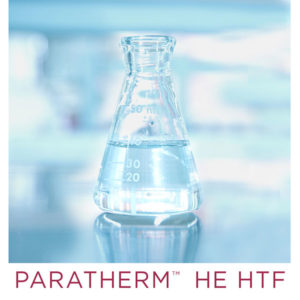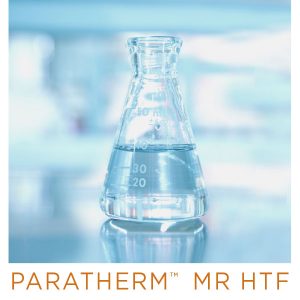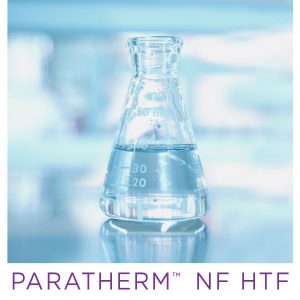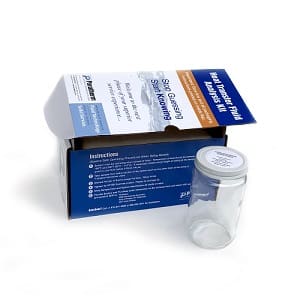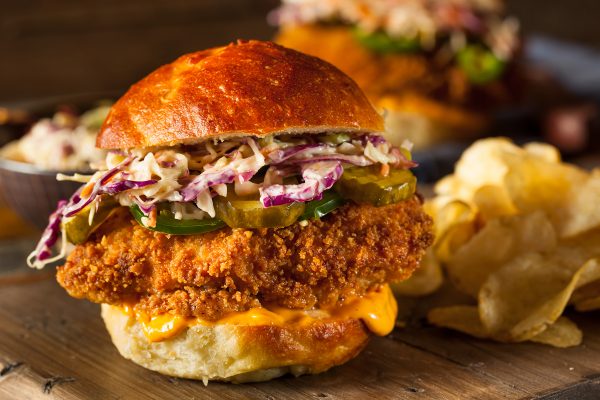
NF (LR and MR also food-grade for other food-processing applications)
Paratherm heat transfer fluids are used in variety of food and beverage applications. Our food grade fluids enable precision heat transfer in ovens, fryers and freezers for food packagers and producers.
Paratherm fluids are used to indirectly heat the distillation columns used in edible oil refining or vitamin purification processes.
Our food grade fluids also find utility in beverage processing, such as in the distillation of fine spirits, or as a cooling media for brewing processes.
Paratherm offers 5 unique fluids that are NSF HT-1 rated for incidental food contact. Paratherm™ NF offers the specific advantage of being:
- Kosher certified by Orthodox Union
- Halal certified by the Islamic Food and Nutrition Council of America (IFANCA)
Paratherm fluids have been the premiere fluids of choice amongst food and beverage processors for nearly 35 years.
Paratherm™ NF Heat Transfer Fluid
- Non-Fouling
- NSF HT-1 Food-Grade (Non-USA Food-Grade Certs available upon request)
- Maximum Film Temperature, 650°F
- Available in 5-gallon pails, 55-gallon drums, 1000L and 330 gallon disposable totes, and in bulk by tankwagon and ocean flexitank.
HEAT TRANSFER FLUID SYSTEMS FOR POULTRY PLANTS
Thermal Fluid Systems are now the standard for new facilities and line upgrades in poultry plants. Thermal fluid systems are being used in large scale facilities throughout the world. The world’s largest poultry further processor almost exclusively uses thermal fluid to heat the fryers in its 20+ plants. The operation uses fryers and ovens to par fry and bake various poultry, meat, sausage, and Mexican food products.
THE SAFETY BENEFIT
The plants range in size form 25-75,000 square feet each, and produce millions of pounds of fried food a month. Only a few lines are still using direct fired heating, simply because they haven’t had the opportunity to switch them over to thermal fluids yet. The biggest benefit of thermal fluids is safety. With direct fire the risk of fire is great, and the danger and stress to employees is high. Thermal fluids greatly reduce the risk of fire if the systems are properly specified and maintained. With increased safety come lower insurance premiums and claims, and OSHA inspections are made significantly easier due to the safer working environments.
PRECISE TEMPERATURE CONTROL
Another benefit to using thermal fluids to heat the frying systems is precise temperature control. The frying oil is controlled within + or – 1° F, which lowers product waste from direct frying by 1%. Most frying plants run an operating temperature of 350-400° F with cooking times of about 15 seconds. To maintain this temperature, a boiler which can range from 800-000 to 1.2 million BTUs is set up in a heater room and set between 530-550° F. The fluid velocity in heater coils is about 10 feet per second, so the fluid keeps moving to maintain consistent temperatures.
Having the boiler in a separate room aids in creating a safer working environment. Maintenance can be easily performed without interfering with the line.
NO FUEL ODOR AND FOOD SAFE
Employees enjoy thermal fluid systems because they eliminate fuel odor in plants, not to mention the possibility of explosions from open flames. This is a significant benefit over direct fired systems.
Get an instant email of the Paratherm NF® Food-Grade Heat Transfer Fluid product information, safety data, and physical/thermal properties data by entering your email address here:
Email:
Email it!
View the Paratherm NF Heat Transfer Fluid Page Here
View other Paratherm Food-Grade Heat Transfer Fluids Here
With Paratherm NF even a leak isn’t a big problem. We have conducted extensive toxicity tests on lab rats, and not one was harmed by ingesting the fluids, a testament to the “food safe” nature of the product. Even if a system were to leak into the frying oil, or the processed product would get HTF splattered on it, the food could still be used for animal feed.
MAINTENANCE AND FIRE PREVENTION
With Heat Transfer Fluids, safety and performance are greatly improved through proper maintenance. A program of daily or weekly checks keeps systems running at their best.
Having the boiler in a separate room aids in creating a safer working environment and maintenance can be easily performed without interfering with the line.
Keeping the Y strainer cleaned will prolong the life of your fluid charge, and help the system run smoothly.
If sludge is present, side stream filters will remove sludge over a period of time during continuous operation.
Examine sources of potential leaks such as valves, flanges, weldments that see stress, instrument ports and threaded fittings. Smoke is a sure sign that fluid is leaking.
Check the system vent. Mist or steam coming from the vent can signal water in the system or that the fluid is decomposing. If steam is coming out, check the catch drum at the end of the line from the expansion tank relief valve. If it contains liquid, you will want to figure out why, because hot fluid splashing into a drum partially filled with water can create a cloud of hot oil mist that can easily ignite. This could cause an explosion and fire.
KEY INSTALLATION AND MAINTENANCE CONSIDERATIONS TO PREVENT FIRE ARE:
- Component selection
- Do not use threaded fittings. Due to a large degree of thermal expansion and contraction: leakage is almost guaranteed.
- Use only closed-cell insulation in leak prone areas such as: valves,pumps, flanges and instrument ports.
- For valve stems bellows seals are the most widely used.
- Graphite sheet gaskets are the best choice for flanges.
- Follow manufacturers recommended torque and tightening sequence when installing gaskets.
- Installation
- During installation or construction four areas should always be considered: system cleanliness, component orientation, system tightness and allowance for thermal expansion and contraction.
- System Cleanliness
- Assure the system is clean and dry. “Hard” contamination must be removed as the system is assembled. Hard contamination such as mill scale, weld splatter/slag and dirt can be controlled by properly cleaning the Y strainer.
- Component Orientation
- Locate expansion tanks far enough away from heaters in vented systems, so they run at no more than 150° F.
- Warm up valves should normally be closed. The fluid can severely oxidize if it is run hot and comes in contact with the air.
- Valves should be mounted stem side, so that that leakage from the bonnet gasketing is less likely to enter nearby porous insulation.
- Gaskets should be of the type that can flex with the system’s thermal expansions.
- Porous insulation should be kept away from potential leak points.
- System Tightness
- Once construction is complete, allow for pressure testing at potential leak points using simple soap-bubble detection methods. When the system is charged with heat transfer fluid, circulate the system slowly bringing the temperature up to 220°F, release steam and liquid, then resume gradually bringing up to the operating temperature.
- Allowance for Expansion and Contraction
- Average Thermal Fluid systems experience wide temperature swings.
- Different metals expand and contract at different rates.
- If allowances are not made, piping and welds may not hold up, and can result in showers of hot fluid.
OTHER ARTICLES
Fire Prevention in Thermal Oil Systems Paratherm User’s Guide Technical Data Sheet
POULTRY INDUSTRY LINKS
Meat & Poultry Online — www.meatandpoultryonline.com
Food Engineering — www.foodengineeringmag.com
NSF “Public Health and Safety Company”— www.nsf.org



